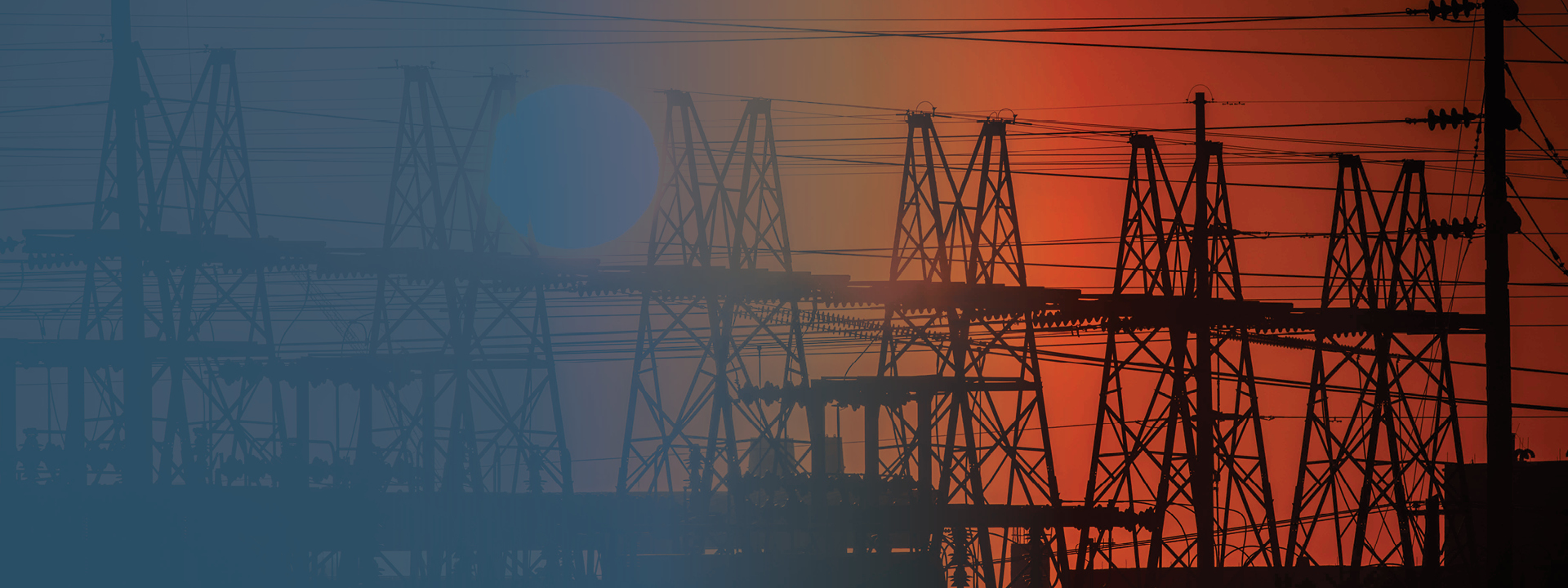
Sandia National Laboratories Advanced Grid Modeling Program
The electric power grid is the foundation of modern society. In fact, the National Academy of Engineering identified electrification as the greatest engineering achievement of the 20th century (http://www.greatachievements.org/). Today’s grid is rapidly evolving. Increasing amounts of variable renewable generation like wind and solar PV are being deployed, including a significant amount of distributed generation. In addition, recent natural disasters and severe weather events have illustrated the fragility of the grid and the potential for long-term outages. Because of the increasing complexity of the electric power grid, advanced grid modeling (AGM) is required to work towards a future resilient and flexible electric power system. Sandia’s AGM program focuses on the following technical areas: grid stability; electric power system planning and operations; electric power system protection; threat modeling; resilience metrics and modeling; and machine learning/data analytics.
Power System Dynamic Performance
Power system stability refers to the ability of the electric power grid to quickly recover from disturbances. Small signal stability is concerned with the response of the power system to small disturbances where the system can be approximated by a linear model. All large electric power systems exhibit low frequency inter-area oscillations in the 0.1-1 Hz range. These are a concern because of their potential to cause power disruptions such as the 1996 West Coast Blackout, which was partially attributed to an undamped inter-area oscillation. Transient stability refers to the response of an electric power system to a large disturbance, like the loss of a large generator or transmission path. In this case, a nonlinear system model is required, and the goal is to maintain synchronism in the face of the large disturbance. Voltage stability is concerned with maintaining a constant voltage and avoiding operating states that might quickly result in voltage collapse. Sandia’s research focuses primarily on small signal stability, transient stability, and voltage stability. Learn more about Power System Dynamic Performance.
Power System Operation, Planning & Economics
Power system operations and planning have a large impact on the economics and resilience of the electric power grid. Optimal power system operation can result in significant cost savings, especially in the face of uncertainty associated with variable renewable generation. The dispatch of generation can also impact the resilience of the grid to natural and manmade disasters. Finally, as the grid is evolving, new market designs are required to maintain efficient and stable operation of the grid. Sandia’s research focuses on advanced production cost modeling (PCM) which is the basis for power system operation, power system planning, and electricity market design. Learn more about Power System Operation, Planning & Economics.
Power System Protection
Electric power system protection is fundamental to the safe and economical operation of the electric grid. Without protection schemes very expensive equipment like generators and transformers could be easily damaged under various fault scenarios. As the grid is evolving to include more inverter-based and distributed generation new protection schemes are required to maintain safe and reliable operation. The fault induced response of inverter-based generation is fundamentally different than traditional generation. As inverter-based generation becomes more prevalent, much of the existing protection hardware will have to be updated or upgraded to maintain functionality. Sandia’s research focuses on developing new protection schemes that will be required for the future grid. Learn more about Power System Protection.
Threat and Impact Modeling
The electric power grid is vulnerable to a wide range of natural and manmade threats. Examples include extreme weather events, terrorist attacks, and even cyber-attacks. An accurate threat model is the foundation of all analytics to assess and mitigate vulnerabilities. Sandia’s threat modeling research focuses on developing statistical models of natural and manmade threats, as well as how these models can be used for resilience optimization. This research involves building models from historical data as well as performing device testing to identify failure modes and their associated probability density functions. Learn more about Threat and Impact Modeling.
Resilience Metrics and Modeling
Resilience is defined as the ability of a system to withstand and quickly recover from low probability, high consequence events. Examples of these types of events include hurricanes and earthquakes as well as manmade disasters. This differs from reliability, which is the ability of the system to withstand and quickly recover from high probability, low consequence events. Reliability metrics are well defined, and utilities are often compensated for meeting (or penalized for exceeding) reliability metrics. On the other hand, there are no agreed upon metrics for evaluating grid resilience. Much of Sandia’s work focuses on defining appropriate resilience metrics, including metrics for defense critical energy infrastructure (DCEI). Another area of research is quantifying the impact to society of long-term outages and developing modeling tools to improve grid resilience. Learn more about Grid Resilience and Wildfire Electric Grid Resilience.
Artificial Intelligence and Data Analytics
The increased prevalence of sensors in the grid, ranging from phasor measurement units (PMUs) to advanced metering infrastructure (AMI) in distribution networks, has resulted in an explosion of grid data. Machine learning techniques are well suited for making inferences from large data sets. Examples include applying machine learning techniques to AMI data to identify model errors in distribution networks to using machine learning algorithms to improve the operation of protective relays. Machine learning and data analytics is an important component of Sandia’s Advanced Grid Modeling (AGM) program. Learn more about Artificial Intelligence and Data Analytics.
Acknowledgment
Sandia’s AGM program is supported by the U.S. Department of Energy Office of Electricity Advanced Grid Modeling Program under the guidance of Dr. Ali Ghassemian. Sandia National Laboratories is a multimission laboratory operated by National Technology and Engineering Solutions of Sandia LLC, a wholly owned subsidiary of Honeywell International Inc., for the U.S. Department of Energy’s National Nuclear Security Administration. Sandia Labs has major research and development responsibilities in nuclear deterrence, global security, defense, energy technologies and economic competitiveness, with main facilities in Albuquerque, New Mexico, and Livermore, California.
Contact
Brian J. Pierre, Ph.D
Manager, Electric Power Systems Research Department
bjpierr@sandia.gov